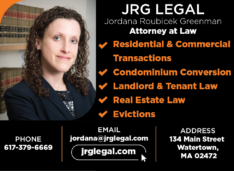Private rental housing comes to the rescue
. Posted in advice, financials - 1 Comment
By Linda Levine, SPOA Board member
 Hardly a day passes without an avalanche of articles bemoaning a housing crisis. Rents are rising, they say. Panicking tenants of modest and now even middle-class income are being priced out of popular neighborhoods like Cambridge or sections of Boston. Lucky ones win lotteries for housing built with government subsidized funds, but there are many more in need. Or so the story goes.
Hardly a day passes without an avalanche of articles bemoaning a housing crisis. Rents are rising, they say. Panicking tenants of modest and now even middle-class income are being priced out of popular neighborhoods like Cambridge or sections of Boston. Lucky ones win lotteries for housing built with government subsidized funds, but there are many more in need. Or so the story goes.
Lost in the drumbeat is the unpopular idea that not every renter can live in the neighborhood of their choice. But maybe they can. Maybe there is more choice than they say.
A Manhattan Institute study of New York City last year searched U.S. census data and found more than 18,000 vacant, family-sized units (two or more bedrooms) available in neighborhoods at “naturally affordable” rents: at a median rent of $1,550 per month, which is affordable to those making less than $62,160, which is 80% of the area’s median income.
Let’s explain those terms. “Naturally affordable” means the apartments are privately owned, with rents set by the owners and no government subsidies involved. “Affordable” means a household’s rent equals 30% of their income or less. “Median income” is about the same thing as “middle income.” “80% of median income” means that households somewhat below middle income and lower than that could afford the naturally available units.
The study also made the surprising finding that unsubsidized affordable housing, including studios and one- and two-bedroom units, can be found in 42 of New York City’s 55 neighborhoods.
Surely, if New York City – the capital of high rents – has such reasonably priced, available units, so do Boston and Cambridge. The Boston area needs a similar analysis.
The brownstones of Brooklyn and New York City and the cottages of Oakland, California, are noted as historical forms of naturally affordable housing. In Boston, it is the triple decker that was the road to home ownership for Boston’s immigrant families of 100 years ago.
These three-story, wood-frame houses were traditionally bought by working class immigrants. One floor was for the family. A second floor may have been for the extended family or for a rental, and the third apartment was rented to pay the mortgage. Although the term “naturally affordable” is a recent creation, this historic form of housing worked without any government assistance or interference.
Many rooming houses once populated Massachusetts cities, another historic form of naturally affordable housing. Consisting of rooms for single people with shared kitchen and bath, they were simple and were the choice of many who needed them and could not afford more. Zoned out of existence by strict building codes, their loss is a major reason for our homeless problem.
Also zoned out are larger apartments subdivided into two smaller apartments, which become lower-rent and affordable without any subsidies. Also prohibited are finishing-off basements and attics as naturally affordable units.
Affordable rents are available within commuting distance of Boston. Renters may feel like Worcester is another state, but it is only a 45-minute drive from Boston, not an unreasonable commute, especially on the Mass Pike. A quick look at current apartments for rent on Zillow reveals apartments comparable to Boston spaces for half the rent. Here are some examples:
- Worcester: 2 bedroom, 1 bath, 1,050 square feet: $1,000 a month; 3 bedrooms, 1 bath, 1,050 sq. ft: $1,000.
- Holyoke: 2 bedroom, 1 bath, 723 sq. ft: $900.
- Closer to Boston are:
- Framingham: 3 bedroom, 1 bath, 1,242 sq. ft: $1850; 1 bedroom, 1 bath, 800 sq. ft: $1,125.
- Westborough: 1 bedroom, 600 sq. ft: $950, all utilities included, found on Craigslist.
In 1994, Massachusetts citizens passed a statewide referendum abolishing rent control. Since then, various forms of affordable housing have been devised. The Community Preservation Act, when adopted in local communities, uses a surtax on property tax bills to fund affordable housing trusts. Another approach is inclusionary zoning, which, when adopted, requires any new housing development to “set aside” a percentage of apartments at below-market rents. These programs are widely criticized as favoring the lucky.
The author of the naturally affordable study, Howard Husock of the Manhattan Institute and former Harvard professor, urges people to “take Habitat for Humanity seriously,” which uses volunteer members of the community to help build housing affordable to low-income buyers without government subsidies. In greater Boston in the past decade, Habitat has completed 15 projects, 12 in poorer neighborhoods of Boston: Mission Hill, Roxbury, Roslindale, and Dorchester. In Husock’s words: “We believe home ownership is a vital step to help families break the cycle of poverty and contributes to pride in families and communities.”




